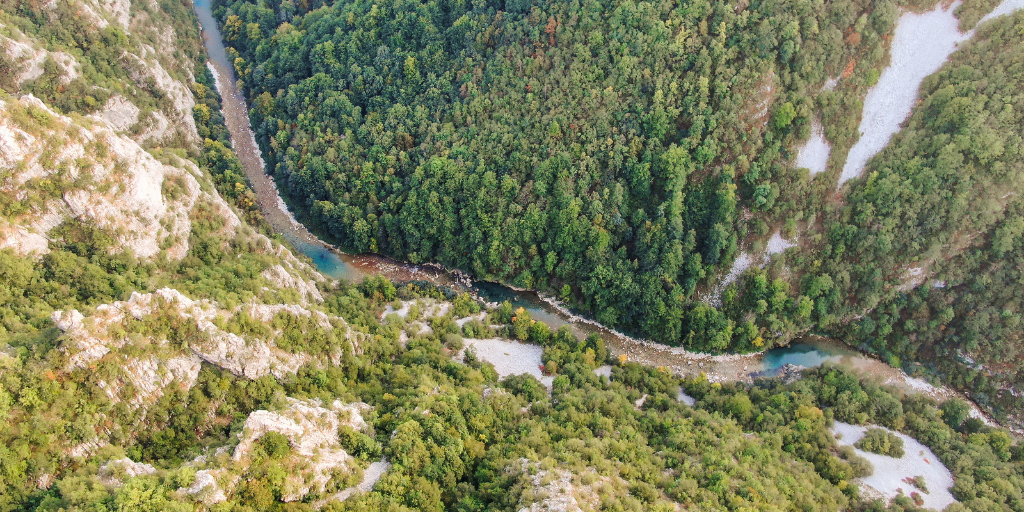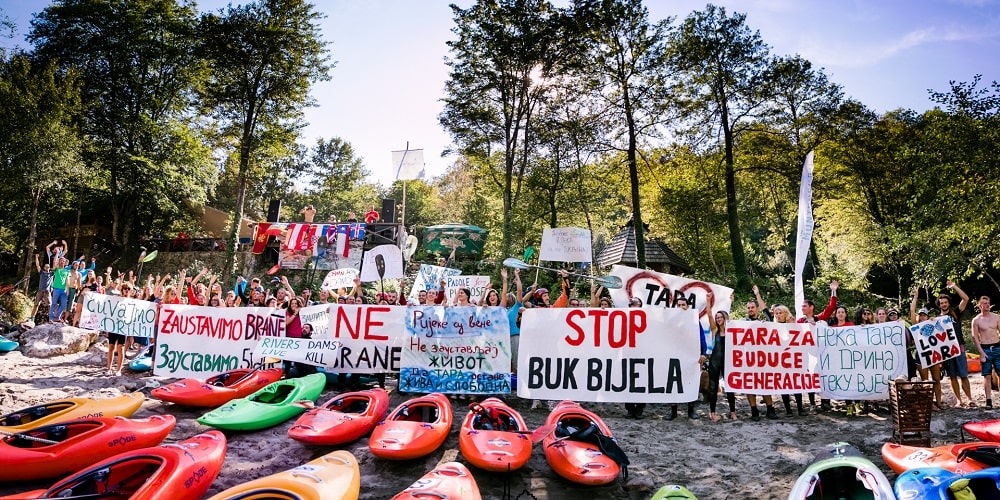A clash is raging between nature and finance. On the one hand, the EU is striving to improve the deteriorating state of nature across Europe, with initiatives like the Biodiversity Strategy 2030 and the European Green Deal. On the other, massive amounts of public money continue to flow to infrastructure projects with devastating impacts on the natural world. Our work where finance meets the natural world advocates for adequate protection and restoration projects to ensure a green future for all.
IN FOCUS
Rivers and communities
The countries of the Energy Community Treaty have diverse energy mixes, but hydropower has traditionally played a strong role in many of them. Albania is almost completely reliant on dams for its domestic electricity generation, followed by Georgia with an average of 80 per cent of electricity generated by hydropower and Montenegro with an average of 55 per cent.
EU funds and biodiversity
In May 2020, EU leaders committed to an ambitious Biodiversity Strategy for 2030, outlining the clear need to act on biodiversity loss and address the failing health of nature.
Discussions are now underway to agree on a new EU budget which will run from 2027 to 2034. This represents a golden opportunity to improve biodiversity spending to achieve the objectives of the biodiversity strategy in full.
As well as addressing the biodiversity crisis, strategically supporting nature through EU funds is also one of the most effective ways to tackle climate change, while providing jobs and improved health at the same time.
Yet, with many of the previous strategy’s objectives left unachieved, the pressure now mounts for this decade. Never before has there been so much potential – and urgency – to use EU funds and investments to address the biodiversity crisis.
Related projects
Komarnica hydropower plant, Montenegro
Planned by Montenegro’s state-owned electricity utility EPCG, the need for the Komarnica hydropower plant has never been proven.
EU funds and biodiversity
Nature in Europe and beyond is in crisis. 81 per cent of habitats in the EU are in ‘poor condition’, and without swift action this will only become worse. We need systemic and wide-reaching action and investments to tackle biodiversity loss and help restore nature before it is too late. The EU has pledged at least 20 billion per year from the EU budget to be earmarked for biodiversity by 2027, offering enormous potential to restore and protect nature, providing this is properly invested. We are closely monitoring the proposal for the next EU Budget, to be released in 2025, to improve the use of EU biodiversity financing and to ensure these public funds work for – not against – nature.
Buk Bijela dam and the Upper Drina cascade
Buk Bijela is one of 14 dams planned on the upper Drina and its tributaries. It would block the migration of the majestic Danube salmon and damage local rafting tourism. Its development has been marked by a series of legal violations.
Latest news
Another needless threat to the ecosystems we all depend on: The Commission’s panicky, chaotic deregulation drive has to stop
Press release | 9 December, 2025Among the slew of European Commission initiatives set to be launched on Wednesday 10 December is the so-called Grids Package, leaked to several media outlets last week.
Read moreBiodiversity loses out in Hungary’s recovery and resilience plan
Blog entry | 8 December, 2025Despite EU commitments to halt biodiversity loss, Hungary’s recovery and resilience plan has diverted funding from wetland restoration, highlighting structural flaws in the EU’s green-funding allocations.
Read moreAlbania’s Skavica dam can’t get off the ground – time to finally cancel it!
Blog entry | 24 November, 2025The highly damaging hydropower project could hardly have had stronger political support at its inception, with the country’s parliament passing a special law in 2021 to appoint U.S. construction giant Bechtel as the main contractor. But four years later, the project has stagnated, with no environmental permit and no financing.
Read moreRelated publications
Put nature at the centre of Europe’s budget 2028–2034
Joint letter | 16 December, 2025 | Download PDFThis joint letter addressed to Members of the European Council ahead of the European Council meeting on 18–19 December, urges to put nature back at the centre of Europe’s EU budget.
Dispute resolution agreement on Zarafshan wind project
Official document | 3 December, 2025 | Download PDFA dispute resolution agreement was signed by CEE Bankwatch Network and Shamol Zarafshan Energy Foreign Enterprise LLC in October 2025. The agreement is the result of a year-and-a-half-long dispute resolution process supported by the Compliance Advisory
Inclusion of the Habitats, Birds and Water Framework Directives in the Energy Community Treaty: An urgent imperative
Briefing | 1 December, 2025 | Download PDFThis briefing explains why the Birds Directive, Habitats Directive and Water Framework Directive need to be included in the Energy Community Treaty.



